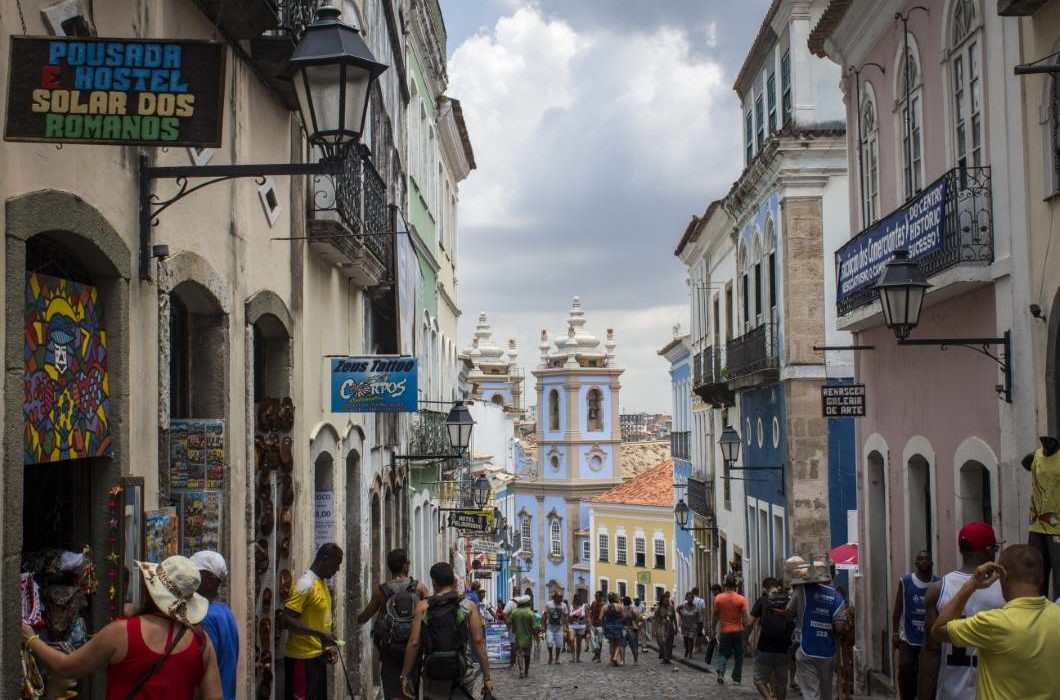
You might also like:
Approximately 6.62 million international tourists visited Brazil in 2018. The number is basically the same as it was over the last three years, showing that the tourist flow has stagnated. To compare, Argentina, the neighboring country welcomed 7.5 million foreign tourists, and for example, the French museum Louvre had 7.6 million visitors. The Brazilian government thus plans to boost the sector.
In 2017, Brazilian tourism companies reported 6.59 million visits. Nevertheless, the levels of satisfaction of those who visited the country last year were high, almost 90%.
The data on Brazilian tourism was presented by the Ministry of Tourism and The Institute of Economic Research Foundation (Fipe). Their study was based on interviews in 25 different places (such as airports and borders) to assess the profile of the foreign tourists, including the reason to visit, method of arrival in Brazil and reviews of the stay.
South America is the main source of foreign tourists for Brazil, almost 60% (4 million). The second continent is Europe, with 20% (1.46 million). The third is North America, with 10.4% (689,000) traveling to Brazil last year.
Sorted by country, Argentina was the main source (2.5 million arrivals), followed by the US (539,500), Chile (387,000), Paraguay (356,000), Uruguay (348,000) and France (238,300).
The Minister of Tourism, Marcelo Álvaro Antônio, has emphasized the lack of growth of the number of visitors and the need to increase the number of foreign tourists. “Stagnation has been a reality for at least 10 years. In the last three, [the number of tourists from abroad] did not surpass 6.5 million, of which 40% are Argentinians, at least”.
According to Leônidas Oliveira, president of Embratur the tourism board, the country has spent only a little for any marketing efforts abroad. Argentina invests annually US $ 60 million to promote their country abroad; Peru, US $ 25 million; the Brazilian budget is however only the US $ 8 million.
Brazilian tourism minister stated that federal government actions will make the arrival of foreign visitors easier, with some countries being contemplated for visa waiver programs, the aviation sector opening itself to foreign investment, as well as changes to the General Tourism Law.
The Argentinians account for a prominent share of tourists who have visited the country, but other nations of the region have also been important, such as Chile, Paraguay, and Uruguay. According to Weverton Monti, the project manager of Fipe, the economic reality of the neighboring country brought the numbers down. But this was counterweighed by the interest of citizens from other nations.
For example, the countries whose citizens have been allowed to electronically apply for a Brazilian visa, making the process much simpler, increased the number of visitors. In these places, the travel figures grew 45% in Canada, 24.7% in Australia, 13.3% in the United States and 5.5% in Japan. By the end of 2017, the visa issuance process started to be conducted through electronic means and, in the current year, the federal government decided to end the visa requirement, which goes into effect on June 17. Nevertheless, the Brazilians still need to apply for a visa to visit those countries.

The most sought-after destinations in Brazil during 2018 were Rio de Janeiro, Florianopolis and Foz do Iguaçu. These three cities have been topping the rankings of the most visited places for several years. The authors of the study also emphasized other locations in the states of Rio de Janeiro and Santa Catarina, such as Búzios and Angra dos Reis, in the first case, and Balneário Camboriú and Bombinhas, in the second.
In turn, among those who visited the countries to attend business events and activities, the main destination was São Paulo, which welcomed 40% of tourists who belong to this category. Rio de Janeiro and Curitiba appeared right after.
The satisfaction index was positive. Of the total number of respondents, 38% reported that their travel experience exceeded the expectations, 49.2% said it met their hopes, 10.8% declared that they felt partially satisfied and 1.5% were disappointed.
When questioned on their intent to revisit the country, 95.4% answered they want to come back. The index remained stable regarding the numbers registered in 2014 when these ranged from 95% to 95.6%. The intention to revisit was higher among foreign tourists who traveled for leisure (96.5%) than among those who arrived with business intents (90.6%).
Leisure was the main reason to visit Brazil for 58.8% of the tourists. Business and conventions ranked second, with 13.5%. Other reasons, such as visiting friends or relatives, totaled 27.7%. Among the first groups, the main reasons mentioned during the interviews were the beaches and the sun, followed by natural attractions.
The Minister of Tourism mentioned, as a negative factor, the drop in the percentage of people who visited Brazil for business intents and events, from 22% in 2014 to 13.5% in 2018.
In 2018, the average daily expense by a tourist in the country was US$ 53.96, a little bit below the average of US$ 55.8 in 2017. The tourists with business purposes had a higher average, US$ 84.3, while those in leisure spent on average US$ 63.2 per day. The average stay of tourists was 15 overnight stays.
Source: tourism-review.com
